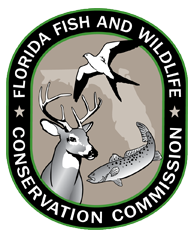Barrier 2: Constituents may have fears, concerns, or beliefs that prevent them from engaging with nature
Media coverage which reinforces the public’s fears, peer pressure, cultural upbringing, safety concerns, and competing interests have fostered growing anxiety and diminished interest in the outdoors and nature. Accounts in the news and social media of wild animals causing disease, injury, or death can exaggerate the risks of spending time in nature. Fears can also stem from mistrust or lack of confidence in government agencies or negative encounters with conservation officers. Cultural differences and ever-growing competition from organized sports and electronics have taken a toll on how much time people spend outdoors.
Strategy 1: Help broader constituencies feel more comfortable safely engaging with nature.
Step 1: Identify how constituent fears, concerns, and beliefs about nature originate and what perpetuates them.
Tactic 1: Synthesize and summarize existing information or conduct new research about fears, concerns, cultural biases, and beliefs about being in nature.
Information on barriers to accessing nature should be synthesized and new research should be conducted where there are gaps in agency staff’s understanding. Richard Louv’s “Last Child in the Woods” raised awareness of the growing disconnect between society and nature. This spawned new research, much of which is housed in the Children & Nature Network’s research library.
Tactic 2: Engage communities to understand fears, concerns, cultural biases and beliefs about being in nature.
By speaking directly with community leaders and the public, specific fears, biases, and beliefs can be identified and the life stage at which the fears originate can be determined. The agency can use listening sessions, surveys, or focus groups to target key constituencies.
Constituent culture success story: training
The Florida Fish and Wildlife Conservation Commission reallocated some of its research funding and collaborated with the University of Florida to hire a professor of wildlife economics to improve agency access to the discipline.
Step 2: Work with constituents to develop and implement strategies that acknowledge and address constituents' fears and concerns about nature.
Tactic 1: Develop and implement new partnerships and nature-based experiences to promote engagement and provide social support to constituents.
Nature-based outdoor experiences can be community or familial social experiences that provide an avenue to the outdoors and positive outdoor experiences. Developing partnerships with service organizations, religious groups, schools, local governments, state and local parks, and other entities can help an agency broaden its reach. Investments in partnerships can provide opportunities for the public to experience nature near urban centers or provide multifocal immersion that enhances comfort and skills in the outdoors. Programs such as Becoming an Outdoors Woman or activities like nature photography can introduce nature to new audiences. Expanding existing offerings such as recruitment, retention and reactivation (R3) initiatives to wildlife viewing, paddling, and other outdoor activities could also help engage new audiences in the outdoors. Social media can be an effective tool to reach new audiences.
Tactic 2: Work with broad constituencies to develop and implement communications and marketing strategies that address fears and discomfort with nature.
There are often misconceptions about the risks of being in the outdoors and nature. Providing information to the public through news releases, signage, or direct engagement can help people avoid or mitigate risks. Social media can be an effective tool for promoting interactions between agency staff and the public about wildlife experiences and for disseminating information rapidly. Group activities can serve as positive peer pressure that can help individuals overcome fear, build confidence, and increase long-term adoption of the activity. Technologies such smartphones, wildlife cameras, augmented reality, gamification, etc., can serve as avenues to bring wildlife closer to people. Smartphone apps such as iNaturalist and eBird can help generate interest in nature and promote stewardship through community science. Developing and integrating outdoor marketing campaigns with partners such as chambers of commerce or tourism boards can help agencies tap into new networks and markets.
Tactic 3: Ensure constituents are invited and feel welcome and comfortable at agency events, properties, and nature-based activities.
Some constituents may not feel invited or welcome to attend agency-sponsored events, use agency public lands, or take advantage of services such as workshops or clinics. By using promotional and communications materials that appeal to broader audiences and marketing targeted at underserved audiences, an agency can broaden its reach. Conservation officers can help ensure a safe and enjoyable experience for outdoor recreationists through patrols and positive interactions with the public.
Tactic 4: Improve or enhance agency customer service so diverse constituents feel welcome.
It is human nature to gravitate toward people with similar interests. Training can help staff gain awareness and develop skills for communicating with constituents whose interests or background differ from their own. Training should be open to all staff but should be prioritized for those who interact frequently with the public such as administrative staff, public land managers, conservation officers, and facilities staff.
Other Resources for Barrier 2
© California Department of Fish and Wildlife
At a public expo, a representative from the California Department of Fish and Wildlife teaches citizens about how to be bear aware to address fears that may prevent them from engaging with nature.


